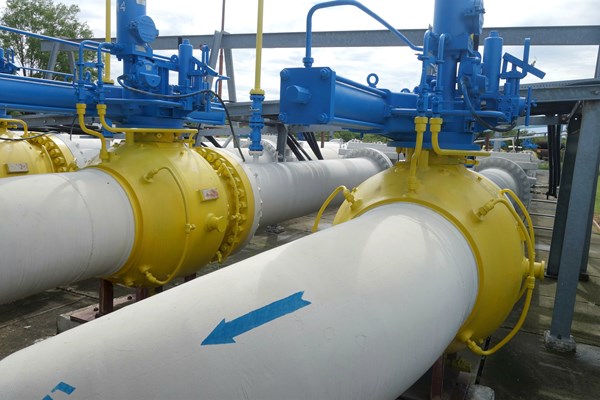Gas prices soaring in Europe as Russia's Gazprom refuses to increase transit through Ukraine
Gas prices in Europe, after a month of respite, are soaring again. On Thursday, the cost of gas futures on the London ICE exchange exceeded $ 500 per thousand cubic meters amid growing demand, a shortage of LNG supplies and Gazprom's refusal to increase transit through Ukraine.
Contracts for August, pegged to the price of gas at the EU's largest hub TTF, reached $501 per thousand cubic meters (€40.87 per thousand kWh), showing an increase of 3% per day and 10% since the beginning of the week.
Relative to January, gas in the EU has risen in price by 150%, and if compared with the lows of last summer almost four times.
A new round of gas rally began on Monday, when the Russian gas giant Gazprom once again ignored the proposal to book additional transit through Ukraine.
Gazprom currently pumps through the Ukrainian gas transport system 109 million cubic meters per day (under a long-term contract) and another 15 million in over-capacity reservation.
Since spring, Kyiv has been regularly holding auctions and inviting Gazprom to order more than 60 million cubic meters per day of transit capacity. But Gazprom has been refusing to reserve it.
"Russia is determined to switch gas flows to Nord Stream 2 as soon as possible and avoid using more expensive routes through Ukraine and Poland. This pushes up prices as demand grows and storage facilities are emptied," said Balint Balas, an analyst at Schneider Electric.
As of June 26, there were 50 billion cubic meters of gas in Europe's underground gas storage, which is 35 billion less than last year and 15 billion below the average over the past five years.
The situation is aggravated by unplanned interruptions in supplies from the Norwegian Troll gas field, a key source of alternative gas for Europe, NatGasIntel experts point out.
Imports of liquefied gas to Europe remain 20% lower than last year, as all free volume is taken by Asia, where prices are even higher. The gas prices in the spot market have reach $ 539 per thousand cubic meters, while futures for February-2022 are traded at almost $ 600.
Wood Mackenzie estimates that the EU receives three fewer tankers each week than a year earlier, and deliveries are 9 tankers behind forecasts.
Gas prices in Asia are pushing up by heat waves and typhoons. Demand for electricity is growing, while ships with gas are delayed, writes NatGasIntel.
European gas prices are expected to catch up with the Asian as buyers compete for free volumes. The volume of gas reserves in Europe is the lowest since 2015, the pace of delivery remains low, which means that Europe risks starting the winter season with half-empty gas storage reservoirs, which will continue keeping the gas prices high.
